The Seven Great Parables of the Lotus Sutra; some of the most important teachings of Buddha for the Mahayana Buddhist path
The lotus flower is among the most beautiful and delicate of blossoms. It grows in the mud and mire at the bottom of a pond, and yet it is not stained by the dirty water. Instead, the lotus flower blooms out of the mud in all its pristine glory, reaching for the sun and lighting up our world.
And just like the flower, the Lotus Sutra is a thing of unparalelled beauty. It is a text that was written over two thousand years ago, and yet it still speaks to us today.
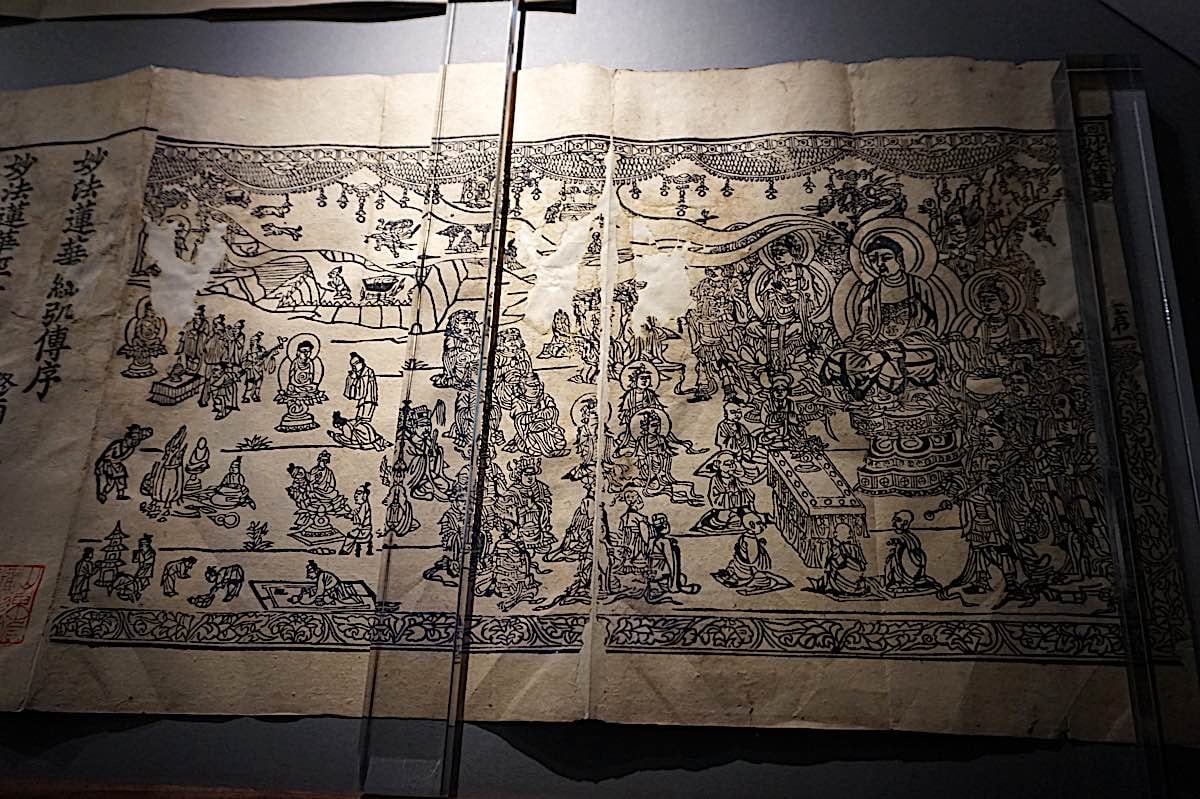
One of the main reasons for the Lotus Sutra’s enduring popularity is its use of parables as a tool for teaching. The Lotus Sutra contains some of the most famous and beloved parables in all of Buddhist literature.
These beautiful and poetic parables have been told for centuries, and they continue to inspire people today. They also contain deep spiritual truths that can help us to transform our lives and put us on the road to Buddhahood.
[Don’t miss the recitation of the entire lotus sutra as a video embedded below with timecodes to navigate to the chapters.]
Teaching through parables
A parable is a short, simple story that we can use to teach a moral or spiritual lesson. They are simple and easy to understand, but they also carry a deep meaning that can be interpreted in many different ways.

Parables are found in many different religious and philosophical traditions, and they have been used for centuries as a way to communicate important ideas.
We can find parables in the Bible, in the oral traditions of Native Americans, and the Hindu scriptures known as the Upanishads.
The Lotus Sutra contains seven of the most famous and well-loved parables in all of Buddhist literature. These parables are known as the Seven Great Parables of the Lotus Sutra.
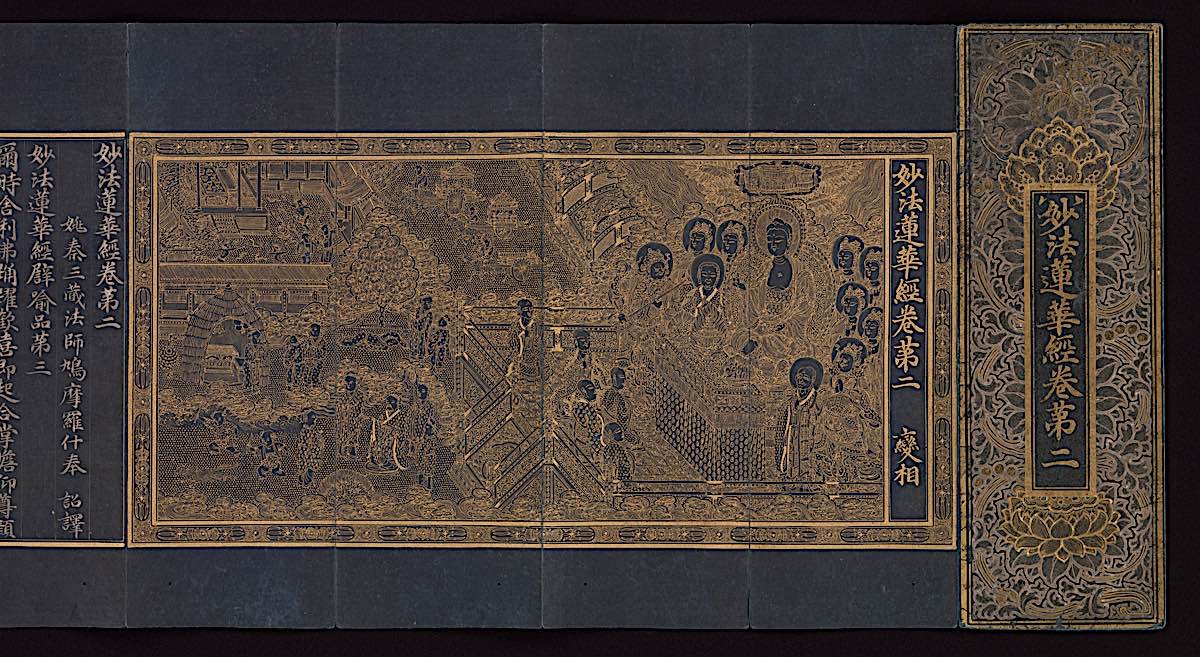
That’s why parables are the perfect way to teach the seven great truths of the Lotus Sutra. These truths are complex, but they can be expressed in a simple and easy-to-understand way. Every parable contains a message that can help us to improve our lives and move closer to enlightenment.
The Lotus Sutra — most influencial
One of the most influential Buddhist Mahayana sutras, the Lotus Sutra has inspired the schools of Buddhism known as Tiantai, Tendai, Cheontae, Nichiren, or Zen, which is popular in East Asia.
It is said to contain the final teachings of Shakyamuni Buddha, and the title of the Lotus Sutra, Saddharma Pundarika Sutra, is Sanskrit for “Sutra on the White Lotus of the Excellent Dharma.” [1]
It some of the most important teachings from a Mahayana view of the Buddhist path and of the person of the Buddha, as well as a teaching on the potential Buddha-nature of all beings.
The central messages of the Lotus Sutra
This Sutra contains three central truths that are essential for understanding the Buddhist path. These three core ideas are expressed in the seven great parables of the Lotus Sutra.
Each parable contains a different key idea, but they all point to these same three core messages. [2]
- The first and most important message is that all beings have the potential to become Buddhas, known as Buddha Nature. This includes you and me and all other sentient beings in the world. You and I have the same potential for enlightenment as the historical Buddha because we all have the Buddha-nature within us.
This means that we have the potential to become enlightened beings and Buddhas ourselves. By following the path of the Buddha, even if it’s just by small gestures such as showing devotion and taking refuge in the Buddha, we can begin to actualize our own potential, achieve enlightenment and become Buddhas. - The second message is that the Buddha is not just a historical figure with a particular set of teachings. The Buddha is an eternal being who has always existed and will always exist. He is the manifestation of the Dharma, or the truth. The Buddha is not just a teacher; he is also our guide and protector, and he is the source of all truth.
This idea was radical at the time because it appeared to contradict the traditional understanding of Buddhism, which said that the Buddha was a human being who attained enlightenment through his own effort. In Mahayana Buddhism, there is, in fact, no contradiction, when we understand that Buddha took birth over many lifetimes and continues to manifest in many forms. His birth as Shakyamuni Buddha was to demonstrate the path to Enlightenment. Mahayana simply takes a larger “multiverse” sized view of what a Buddha is — rather than focusing only on Earth.
Since, in Buddhist understanding, the universe is vast and endless, as is time, with endless cycles — but with no “beginning” — it’s easier to grasp this concept of Buddha manifesting in all universes, multiverses and time. In our era and our earth, he was Shakyamuni Buddha. For a feature on this the Buddhist understanding of the Multiverse, see>> - The third message is “skillful means” — that the path to Buddhahood is not a single, straight line. There is what we call the One Vehicle, an all-encompassing trail to Buddhahood that is suitable for all beings. But within the One Vehicle, there are different paths that human beings can take, depending on their individual needs and circumstances.
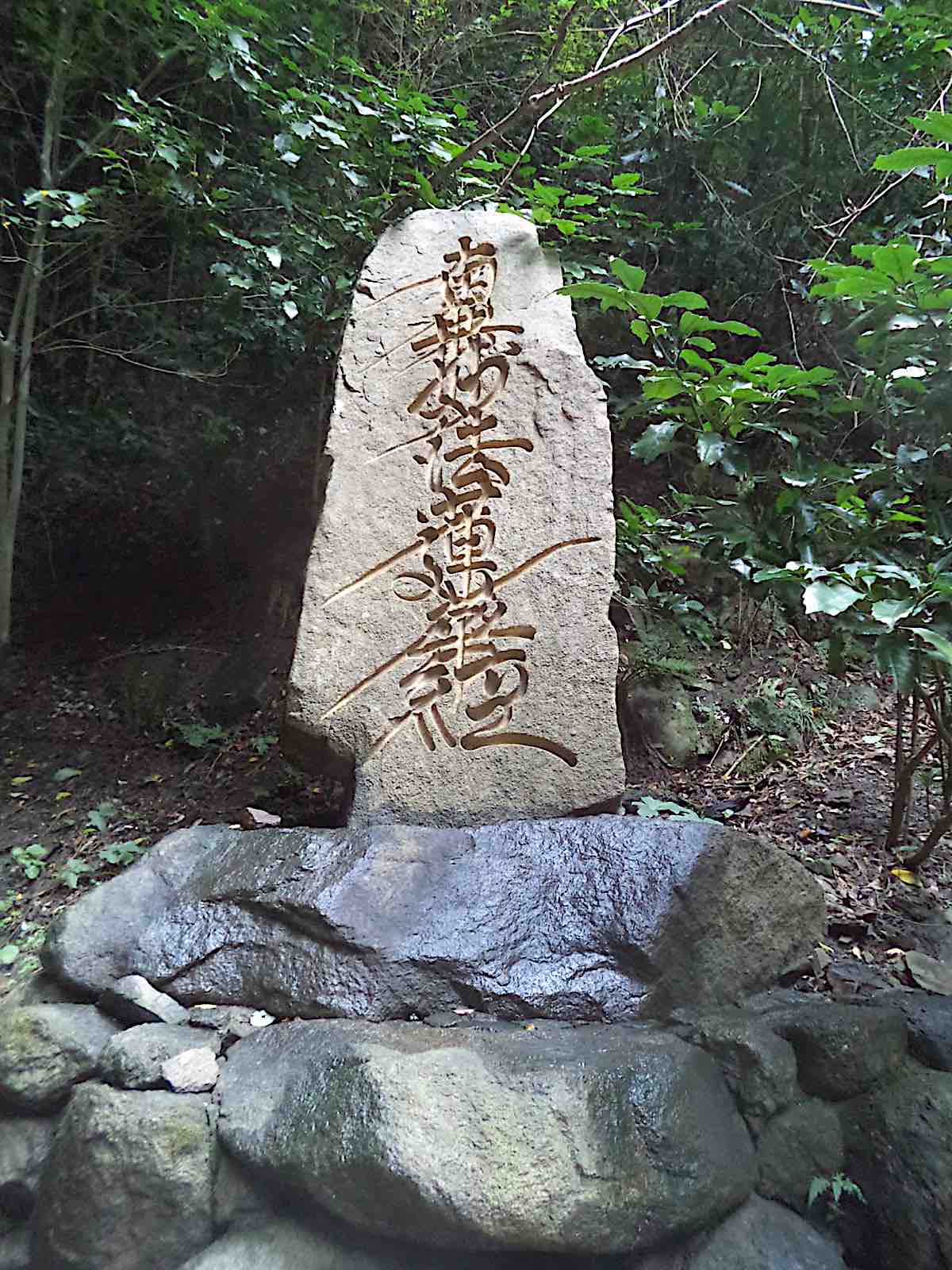
This teaching is known as the doctrine of skillful means. It says that the Buddha teaches in a way that is appropriate for each individual, adapted to their needs and capabilities, so that everyone can understand and follow the path, with no one left behind.
These three core messages of the Lotus Sutra are essential for understanding the Mahayana Buddhist path. By understanding these truths, we can move closer to enlightenment and become Buddhas ourselves.
If we want to understand these truths, we need to look to the seven great parables of the Lotus Sutra, which are another example of “skillful means.”
The content of the Lotus Sutra
The Lotus Sutra is traditionally divided into 28 chapters, each focusing on a different theme or topic. [2]
- Chapter 1. The Sutra begins with a short introduction in which Shakyamuni Buddha explains how the teachings of the Sutra came to him and why he is sharing them. He was in a state of deep meditation when the earth shook, and he brought forward a ray of light from between his eyebrows. He says that there are many different levels of truth and that the truth of the Lotus Sutra is the highest truth, the ultimate teachings.
- Chapters 2-9. These chapters are thought to contain the original form of the text and contain parables on which the rest of the Sutra is based. The main idea in these chapters is that of buddhayana or the Buddha vehicle, and the idea that there ultimately exists only one path or Buddha vehicle, which leads all beings to Buddhahood.
- Chapters 10-22. These chapters focus on the idea of the Bodhisattva, which is the being who has attained realizations but does not go into Nirvana so that he or she can help all suffering sentient beings. The main message included here is that all beings have the potential to become Buddha and that it is through their own efforts that they can achieve this goal.
- Chapters 23-28. The last chapters of the Lotus Sutra are based on glorious Bodhisattvas and their deeds. They teach us about the compassion of these beings and how we can follow their example to achieve our own Buddhahood. Chapter 25 is an especially notable and popular passage describing the Bodhisattva of Compassion Avalokiteśvara (Guanyin, Chenrezig) — and is often presented as a separate sutra. In it, the Bodhisattva describes how he manifests in countless forms through the multiverse in all times.

- To read the 25th chapter, The Gateway to Every Direction [Manifestions by Bodhisattva Avalokiteśvara] see our previous feature with the entire chapter>>
The Lotus Sutra is a text that has inspired Buddhists for centuries. Its message of the Buddha’s eternal nature and the potential Buddha nature of all beings continues to resonate with us today.
This Sutra is a beautiful and poetic expression of the Buddhist path, and it is a text that anyone of any religion or spiritual path can learn from.
If you’d like to listen to the parables, the entire Lotus Sutra is recited in English beautifully by Dharmachakra Wheel of the Dharma [Their Youtube channels is here>>]. It’s 11 hours, but here are the time-code to navigate (the chapters are identified in the headings for each parable below and in the index of times.
- Difficulty level 難度級別 1.0/5 00:48
- Ch.1 Introduction 40:03
- Ch.2 Skillful Means 1:27:33
- Ch.3 A Parable 2:29:13
- Ch.4 Willing Acceptance 3:00:35
- Ch.5 Herbs 3:17:22
- Ch.6 Prediction 3:35:45
- Ch.7 The Apparitional City 4:32:59
- Ch.8 The Five Hundred Disciples Receive Their Predictions 4:55:48
- Ch.9 The Predictions for Those Who Still Have More to Learn and for Those Who Do Not 5:09:12
- Ch.10 The Expounder of the Dharma 5:30:08
- Ch.11 The Appearance of a Jeweled Stupa 5:54:15
- Ch.12 Devadatta 6:12:04
- Ch.13 Perseverance 6:23:44
- Ch.14 Ease in Practice 6:54:44
- Ch.15 Bodhisattvas Emerging from the Earth 7:21:20
- Ch.16 The Lifespan of the Tathāgata 7:40:35
- Ch.17 Description of Merits 8:04:53
- Ch.18 The Merits of Joyful Acceptance 8:17:25
- Ch.19 The Benefits Obtained by an Expounder of the Dharma 8:45:02
- Ch.20 Bodhisattva Sadāparibhūta 8:58:59
- Ch.21 The Transcendent Powers of the Tathāgata 9:08:52
- Ch.22 Entrustment 9:13:06
- Ch.23 Ancient Accounts of Bodhisattva Bhaiṣajyarāja 9:38:19
- Ch.24 Bodhisattva Gadgadasvara 9:58:48
- Ch.25 The Gateway to Every Direction [Manifested by Bodhisattva Avalokiteśvara] 10:23:58
- Ch.26 Dhāraṇī 10:37:19
- Ch.27 Ancient Accounts of King Śubhavyūha 10:54:19
- Ch.28 Encouragement of Bodhisattva Samantabhadra
The parables of the Lotus Sutra
There are seven great parables in the Lotus Sutra, each teaching a different lesson. The symbolism of having seven parables is this sutra is also significant, as seven is considered to be auspicious in Buddhism.
They can be akin to the seven chakras, the seven days of the week, or the seven colors of the rainbow. Each parable has its own unique message, but they all ultimately teach us about the power of Buddha’s nature.
The goal of the Buddha is to lead all sentient beings to become a Buddha also and attain Buddhahood, and these parables show us the way.
But why exactly are the seven great parables of the Lotus Sutra so important? Well, let’s take a look at each one and see what messages they contain. [3] [4]

The Parable of the Blazing House (Chapter 3)
The story of the house on fire is one of the most famous parables in the Lotus Sutra. It tells us of a wealthy man that returns from his travels to find that his large mansion is burning down while his children are still inside, seemingly oblivious to the situation that they are in.
He screams at them to come out, insisting they are in danger. But the children are too busy playing with their toys and refuse to come out.
The man then has an idea to get their attention, so they will come outside to safety. He tells them that he has some new toys outside that are even better than the ones they are currently playing with inside.

The children are so tempted by this offer and excited to see the new toys that their father has for them, that they finally come outside to safety. By stepping outside, they get away from the fire that’s consuming the mansion.
The wealthy man didn’t, of course, have all the toys that he had promised his children as a way of tempting them outside. However, happy to see his children safe away from the blaze, he gives them the most splendid toy they had ever seen, far better than the ones he had promised them in the first place.
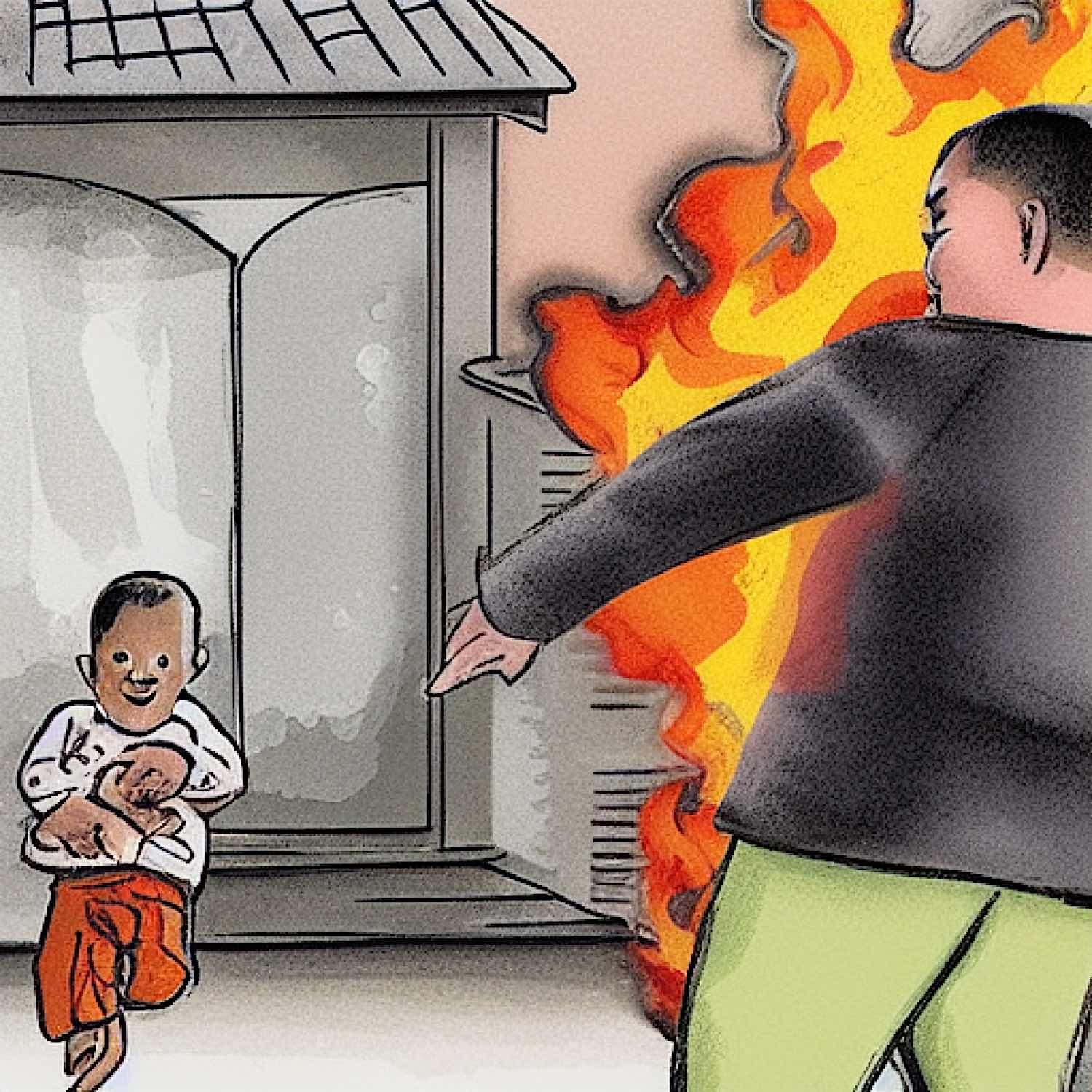
Meaning
The meaning of this parable is that the wealthy man represents the Buddha, and his children represent us. The house on fire is samsara, or the cycle of birth and death, which is full of suffering. The toys that were inside the house, keeping the children stuck, represent the things of this world that distract us from the truth and keep us trapped in samsara.
The toys that the Buddha promised his disciples are the rewards for following the Buddha’s teachings, and the beautiful white ox cart toy represents true liberation or enlightenment.
Message
This parable teaches us that we need to be careful of the things that we allow to distract us from the truth, the shiny new toys that keep us trapped in samsara. We should follow the Buddha’s teachings to achieve liberation from suffering and the cycle of birth and death.

The Parable of the Father and His Lost Son (Chapter 4)
The second parable tells us about a father and son pair. The boy is the son of a rich man, and he decides to leave his father’s house. Instead, he embarks upon a life of wandering from place to place, living in poverty and suffering. Deep down, he believes that he has no worth and that his life is without purpose.
Worried about his son and what has become of him, the father does everything he can to track him down and see how he is doing. He eventually finds his son living in a remote place, begging for food and barely surviving. Upon hearing of his son’s plight, the father sets out to find him and help him by bringing him back to the warmth and safety of his home.
Upon his wanderings, the son one day arrives in a city where a millionaire lives in a palace. What he has no way of knowing is that the millionaire is, in reality, his own father, but the son does not recognize him.
The father sends his guards to find his son so he can come and live with him in his palace, but the son is terrified by the men, and he flees upon seeing them.
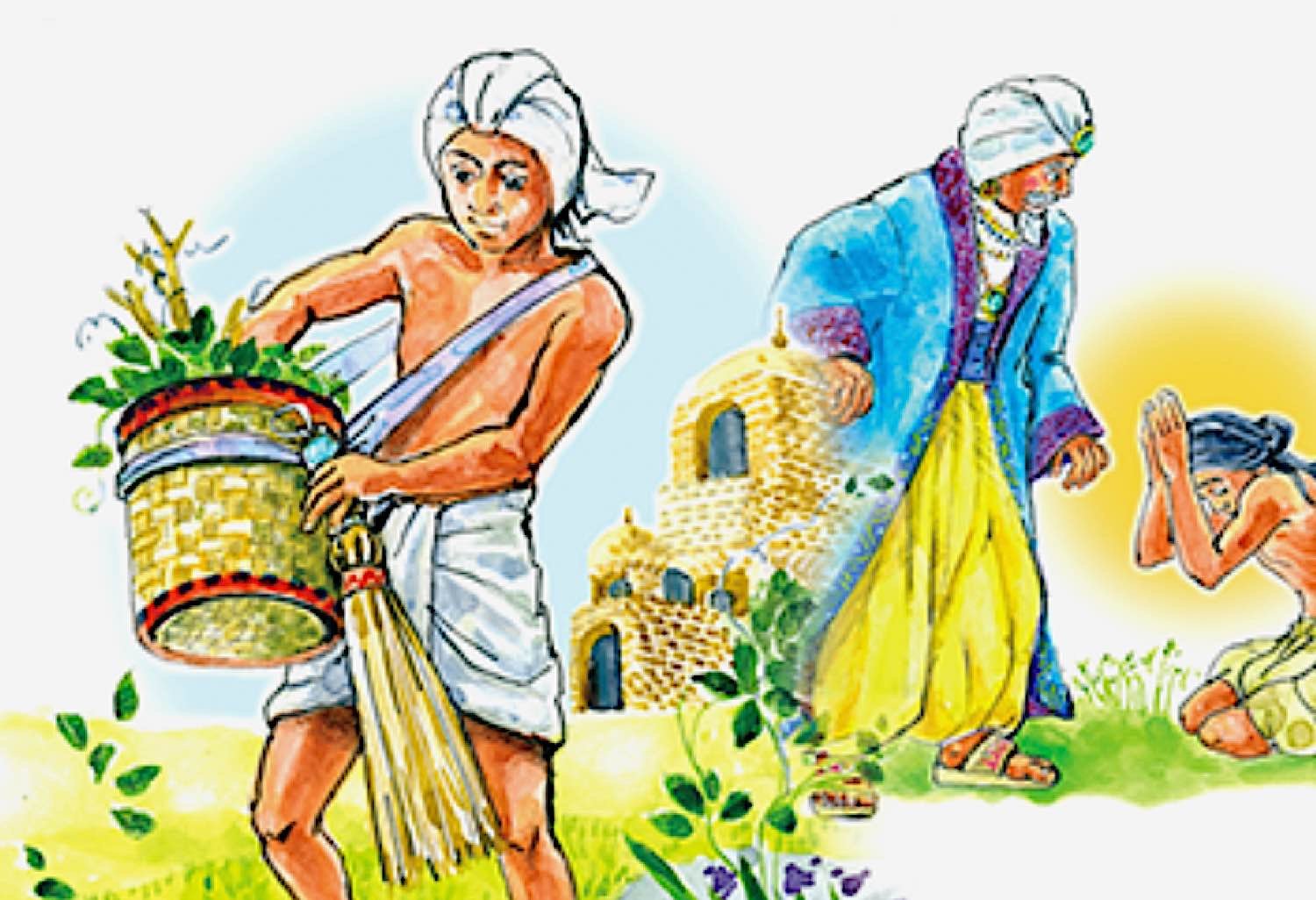
The father then has an idea. He tells his servants to dress in simple clothes and go out into the city to find his son, to see if they have better luck than the guards. When they find him, they are to offer him a job in the palace. The job is a lowly one, to clean the restrooms in his father’s house, but the boy feels that it is a job that matches well his own sense of low self-value. So he takes the job and unknowingly goes to work in his father’s palace, cleaning the toilets daily.
The father himself wants to see his son, but he does not want to scare him away, so he disguises himself as a servant from time to time and goes to work alongside his son in the latrines.
The father sees that his son works hard, and he is filled with love for him. He also sends servants to encourage the boy, telling him he is a strong worker and doing an excellent job until he is eventually promoted to a higher position in the palace.
Then one day, the father finds himself on his deathbed, and he knows that it is time to reveal himself to his son. He calls for him, and when the son comes, he tells him he is his father. He leaves his son all his estate and wealth.
Meaning
In this parable, the father represents the Buddha, and his son represents us, his disciples. The son leaving home and living in poverty parallels our own spiritual wandering and suffering, like us getting lost in samsara and forgetting our true nature.
The simple jobs the son carries out represent the Buddha’s teachings and practices, and when he is promoted, it represents his (and our!) spiritual progress. The father’s inheritance is the teaching of the Law of Supreme Perfect Enlightenment, the One Buddha Vehicle.
Message
This parable teaches us that even though we may feel lost and alone, the Buddha is always there with us, guiding us back to the path of enlightenment. Even if we’re feeling lowly and underserving, Buddhahood is something that is always within our reach.
It also shows us that the Buddha’s teachings are not difficult to follow and that even the simplest act can lead us to liberation. But the Law of Buddhahood is not something we naturally possess; it is something we have to receive, handed down from person to person, all the way back to the Buddha himself. That is why the son received the teachings in the form of inheritance from his own father.

The Parable of the Medicinal Herbs (Chapter 5)
This parable talks of the monsoon season, when the earth is parched and dry, and the sky opens up to let the heavy rains come down. Everything that grows in the soil, the trees, the grass, and the plants, all get water easily from the new falling rain.
But because of their different natures, each of the plants receives the rain in a different way, according to their capacity. The roots of some trees go down deep into the ground, so they are not affected by the surface water, which evaporates quickly. Instead, they can access the groundwater, which is cool and refreshing, through their deep roots.
Other plants have shallow roots, so they can only receive heavy rain on the surface. This water soon evaporates in the heat, leaving them thirsty and wilting.
The great monsoon cloud gives water equally to all of the plants out there but depending on how they absorb moisture and grow; they will become different types of herbs.
Meaning
In this story, the types of plants are the different sentient represent the beings in the world, and the rain symbolizes the Buddha’s teachings. All plants receive rain teachings, but they absorb them differently. Depending on how they receive the Buddha’s teaching, absorb and put them into practice, they will become different types of people.
- The plants grow into three different types of medicinal herbs, superior, mediocre, or inferior herbs.
- Inferior herbs: These are the plants that receive teachings from heavenly creatures and human beings, including the teachings of Brahma.
- Mediocre herbs: These represent the people who receive the teachings to become Pratyekabuddha (the twelve-Linked Chains of Causations).
- Superior herbs: These plants are the people who receive the teachings of Bodhisattva.
Message
This parable teaches us that even if all people receive the same teachings from the Buddha, they are not all capable of benefitting from them in the same way. How they absorb and put the instructions into practice will determine what kind of person they will become. It all comes down to their own capacity and efforts.
- To read the entire chapter 5, fully translated on Buddha Weekly>>

The Parable of the Imaginary City (Chapter 7)
The imaginary or phantom city parable tells of a caravan of travelers who journeyed through the desert for many days, chasing the promise of a great treasure. The caravan had a wise leader who saw that the people were exhausted and becoming disillusioned with their quest. After a long and dangerous journey, many travelers didn’t have the strength to carry on and wanted to turn around and go back home.
The wise leader saw this and thought that he needed to find a way to lift their spirits. In order to give them hope and motivation to continue, he told them about a city that was just ahead, where they could find a place to rest and refresh themselves. This gave the weary group a new sense of purpose, and they redoubled their efforts to reach this new city.
There they stopped and rested, as the guide had promised. But when they felt better, they saw that the city had vanished before their very eyes.
Their wise guide confessed to them that the city was only an imaginary creation, something he had conjured up to help them satisfy their needs, and it had now served its purpose. It had given them the strength to continue when they thought all was lost. Once they gained strength from the phantom city, they could continue on their original path to find the real treasure nearby.
Meaning
The wise caravan leader in this parable is the Buddha, who leads his group of disciples. The caravan is searching for the real treasure, which is Buddha Nature or One Buddha-Vehicle. And the imaginary city where they stop to find temporary respite is the provisional nirvana.
Message
The lesson in this parable is that the disciples of the Buddha can be tempted to settle on achieving nirvana as an end in itself. However, the Buddha warns that this is only a temporary measure and that they should not be content with staying in that state. Their ultimate goal should be to aspire to Buddhahood. In this way, the Buddha helps his disciples to achieve their highest potential as long as they are willing to follow him and keep walking.
- To read the entire chapter 7 of the Lotus Sutra, see our previous Buddha Weekly feature>>
The Parable of the Jewel in the Robe (Chapter 8)
The fifth parable tells us of a poor man who visits a wealthy friend. They drink and enjoy each other’s company until the poor man gets so drunk that he passes out.
The wealthy man has to leave on business, but before he goes, he finds a priceless gem and decides to hide it in the poor man’s robe as a present. He sews it into the lining of the robe so that it will be a surprise for his friend when he wakes up.
The wealthy man leaves on his trip, and the poor man wakes up sometime later. Without realizing the gift that he received from his friend, he goes about his day, resuming his life as a vagrant.
With the passing years, the man becomes more and more poverty-stricken, until one day, he bumps into his good friend, who is surprised to know that he was still destitute.
The friend then showed him the jewel that he sewed into the poor man’s robe, and that had remained hidden all this time, and told him that it was always his to keep.
Even though the jewel had always been with him, no that he actually held it in his hands, the poor man was able to sell it and free himself from the grips of poverty.
Meaning
In this parable, the rich friend is the Buddha, while the poor man represents the ordinary people. The precious jewel sewn into the man’s robe is the Buddha’s teachings about the truth about the Buddha-nature, the truth that all of us — every sentient being — has Buddha-nature “sewn into our robes”
Message
Just like the poor man in the story always had the riches with him, sewn into his coat lining even if he didn’t know it, so too do the ordinary people always have the Buddha’s teachings about Buddha-nature within them. However, they may not realize it or may not know how to make use of that special nature. The truth is that each and every one of us is the Buddha-nature.
All that is needed is for us to receive the seed of Buddhahood and let it grow within us. We can all achieve the Supreme Perfect Enlightenment by following the Buddha’s teachings.
The Parable of the Precious Pearl in the Topknot (Chapter 14)
This sixth parable tells of a wheel-turning king who would reward his soldiers well when they returned victorious from battle. He would give them extravagant gifts of gold, silver, mansions, or other treasures as a sign of gratitude to their valor.
But there is a special gift that he would always keep to himself. He kept a precious pearl hidden in his topknot, away from the sight of others. This lovely pearl was not to be given away lightly. The king kept it until the time when he wanted to reward an outstanding soldier that had proven his worth in the constant fight against evils.
And one day, eventually, the king found a worthy soldier and gave him the precious pearl from his topknot.
Meaning
In this story, the wise king is the Buddha, while his disciples are the soldiers. The gifts that the king bestows upon his army are the preliminary teachings of Buddhism, while the pearl in the topknot, the ultimate gift from the king, is the Law of Supreme Perfect Enlightenment.
Message
This parable tells us that the teachings of Buddhism are all beautiful gifts, but the Buddha only gives his most precious teachings to those who have proven themselves worthy through their work and bravery.
To receive the Buddha’s highest teaching, we must first put his lower teachings into practice in our everyday lives. Only then, when the time and the conditions are just right, will we be ready to receive the pearl of supreme enlightenment.
The Parable of the Skillful Doctor (Chapter16)
This last parable tells of a doctor who is very skillful in his craft. He knows how to treat all sorts of ailments and can always find the proper remedy to cure whatever illness his patients may have.
One day, when the man was out of town, he finds out that his children are sick. They had managed to prise open his medical box and had taken some of his poisonous drugs, thinking that they were sweets. The children were now gravely ill, and no one in the house knew what to do.
The man quickly returns home to find his children agonizing and determines that he will use his knowledge of poisons to save his children’s lives.
The physician then prepares an antidote to the poison they had taken and tries to administer it to his children. Some of his children took medicine immediately, and happily, the antidote worked. The children were instantly cured of the poison and all of its symptoms.
However, some of the children refused to take medicine, even when their father pleaded with them. They were out of their right minds because of their illness, and so sure that the poison would kill them that they would not listen to reason. The father felt powerless to make them take medicine and save their own lives, knowing they would not live long if they didn’t.
So he decided to try a different approach. Leaving the medicine with them and again reminding them that it was the only thing that could save their lives, he left town and went away again by himself.
When he reached a faraway land, he sent word to his children, informing them that their father was dead.
And as the children heard the news, they were inconsolable. They wept and wept until, finally, they came back to their senses. Through their grief, they decided to take the medicine that their father had left for them, and finally, they were saved.
Upon hearing that his children were now cured and recovered from the poison, the doctor decided that he could come back home and quickly returned to be with his children.
Meaning
In this parable, the wise doctor who creates the antidote to save his children’s lives represents the Buddha. The poison the children took represents our ignorance and delusions, while the antidote is the Buddha’s teachings.
The children who refuse to take the medicine represent those who reject to listen to the Buddha’s teachings, even when they are suffering.
The children who do take the medicine represent those who are willing to listen to the Buddha and put his teachings into practice. Even when they are suffering, they have faith that the Buddha can help them and are willing to do what is necessary to be saved. This way, the restoration of health is liberation.
Message
Like the physician in this story, Buddha realized that while he was always present in the world, there were many that would not seek his teachings, and he could only help those who were already willing to listen to them and put them into practice.
That is why Buddha, although he has eternal life, uses his death as a way to teach us. Through death, Buddha hopes to arouse our faith in him, so that we will be willing to take his medicine and aspire to enlightenment.
The Buddha’s teachings are the antidote to the poison of our ignorance and delusions. If we are willing to listen to him and put his teachings into practice, we can be saved from our suffering.
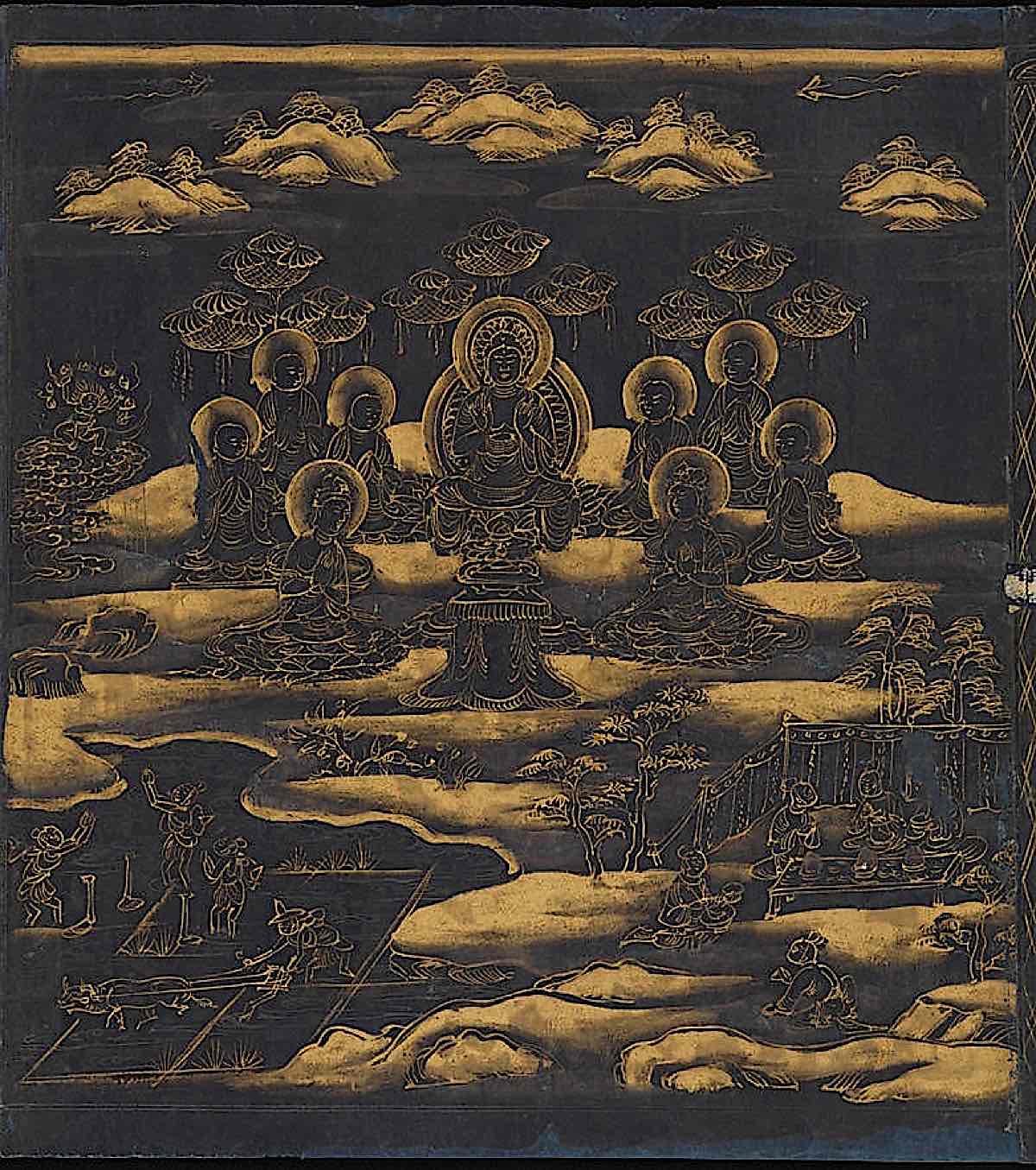
Attaining Buddhahood
The seven parables are a representation of the Buddha’s teachings and how they can be applied in our lives. Each story is meant to illustrate a different point about the Dharma, or the truth. And together, they comprise the Law of One Buddha-Vehicle or the Law of Supreme Perfect Enlightenment that can help us to attain liberation.
Attaining Enlightenment is the ultimate goal of our lives because it is only through Enlightenment that we can be truly liberated from the cycle of birth and death.
In order to attain Buddhahood, or to become an enlightened Bodhisattva who can help all beings, we must first listen to the Buddha’s teachings and put them into practice. This is not easy because we are living our lives and convictions deeply rooted in our ignorance and delusions. However, if we have faith in the Buddha and are sincere in our practice, anything is possible. And with the help of the Buddha and all the bodhisattvas, we can definitely attain salvation.
We hope that by reading and reflecting on these stories, the seven great parables of the Lotus Sutra, you will find new insights into your own life and spiritual journey.
Sources
[1]: Lotus Sutra
[2]: https://en.wikipedia.org/wiki/Lotus_Sutra
[3]: https://lotus-happiness.com/essence-of-buddhism/
[4]: https://zennist.typepad.com/zenfiles/2011/11/seven-parables-from-the-lotus-sutra.html
[5] https://lotus-happiness.com/seven-parables-of-the-lotus-sutra/
More articles by this author
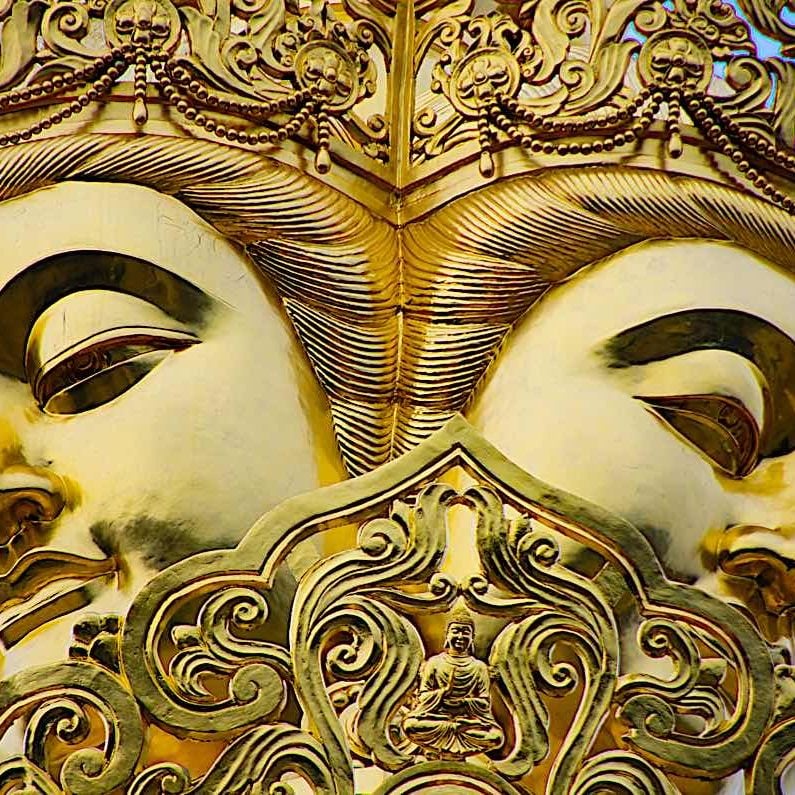
Samantabhadra’s The King of Prayers is the ultimate Buddhist practice how-to and itself a complete practice

The Five Strengths and Powers or pañcabalā in Buddhism — the qualities conducive to Enlightenment: faith, energy, mindfulness, concentration and wisdom

Tara’s Great Dharani Supreme of all Mantras –with Music version– and the Sutra of Tara Who Protects from the Eight Fears: in Tara’s Own Words
Search
Latest Features
Please support the "Spread the Dharma" mission as one of our heroic Dharma Supporting Members, or with a one-time donation.
Please Help Support the “Spread the Dharma” Mission!

Be a part of the noble mission as a supporting member or a patron, or a volunteer contributor of content.
The power of Dharma to help sentient beings, in part, lies in ensuring access to Buddha’s precious Dharma — the mission of Buddha Weekly. We can’t do it without you!
A non-profit association since 2007, Buddha Weekly published many feature articles, videos, and, podcasts. Please consider supporting the mission to preserve and “Spread the Dharma." Your support as either a patron or a supporting member helps defray the high costs of producing quality Dharma content. Thank you! Learn more here, or become one of our super karma heroes on Patreon.
Lee Kane
Author | Buddha Weekly
Lee Kane is the editor of Buddha Weekly, since 2007. His main focuses as a writer are mindfulness techniques, meditation, Dharma and Sutra commentaries, Buddhist practices, international perspectives and traditions, Vajrayana, Mahayana, Zen. He also covers various events.
Lee also contributes as a writer to various other online magazines and blogs.















